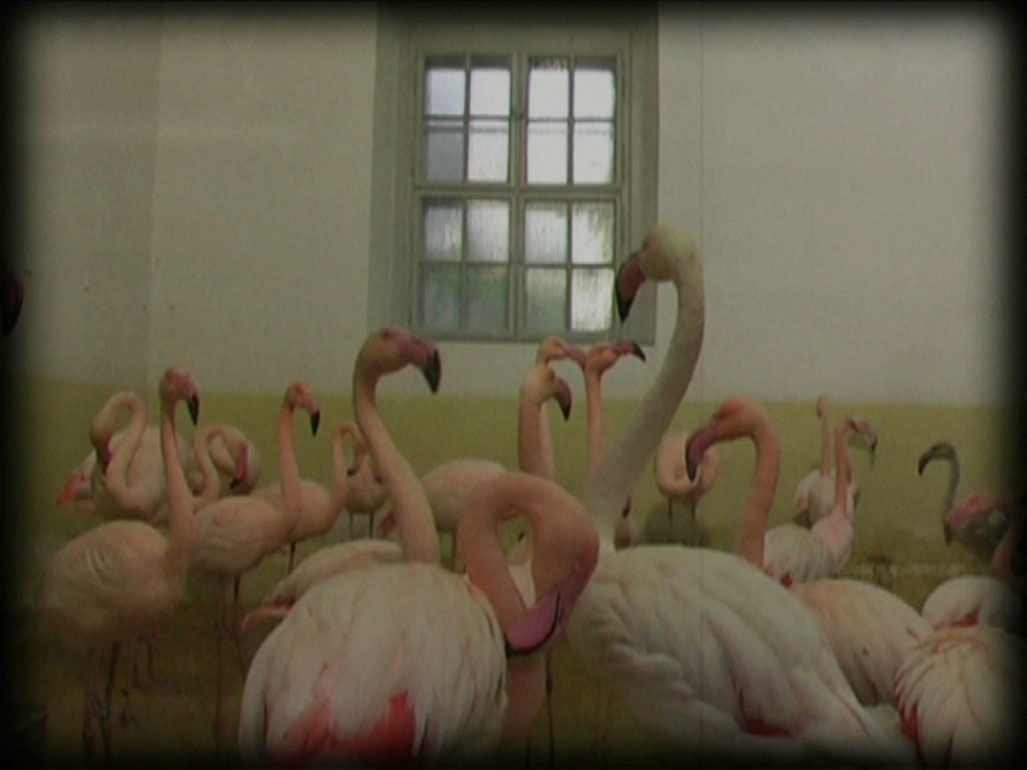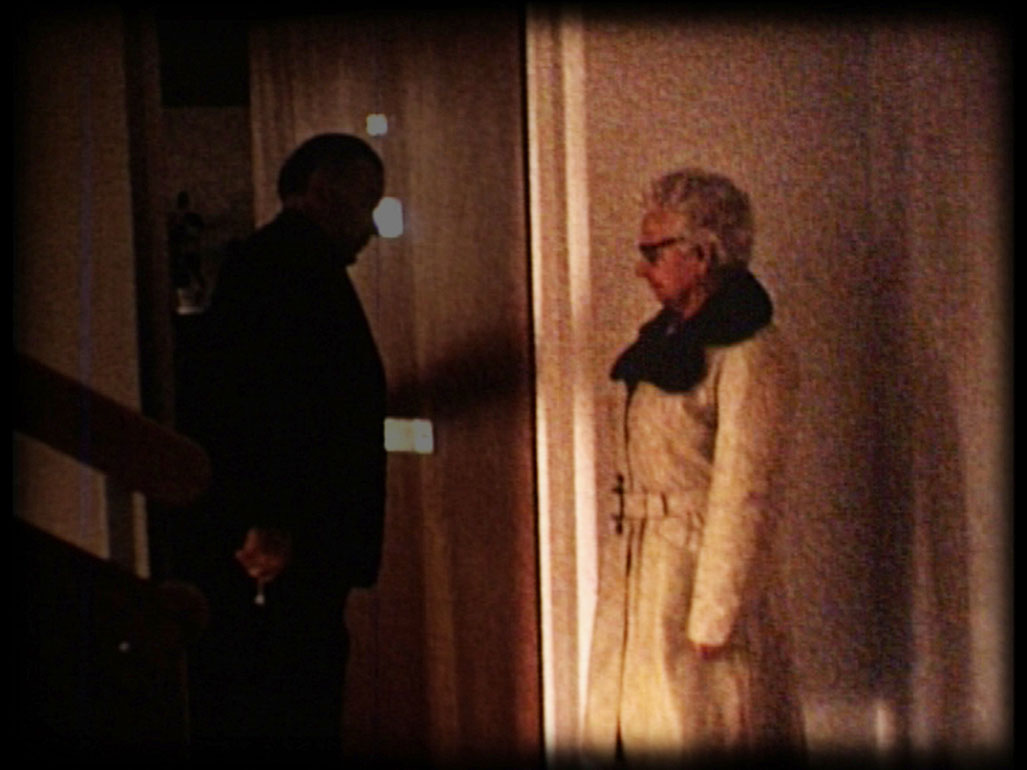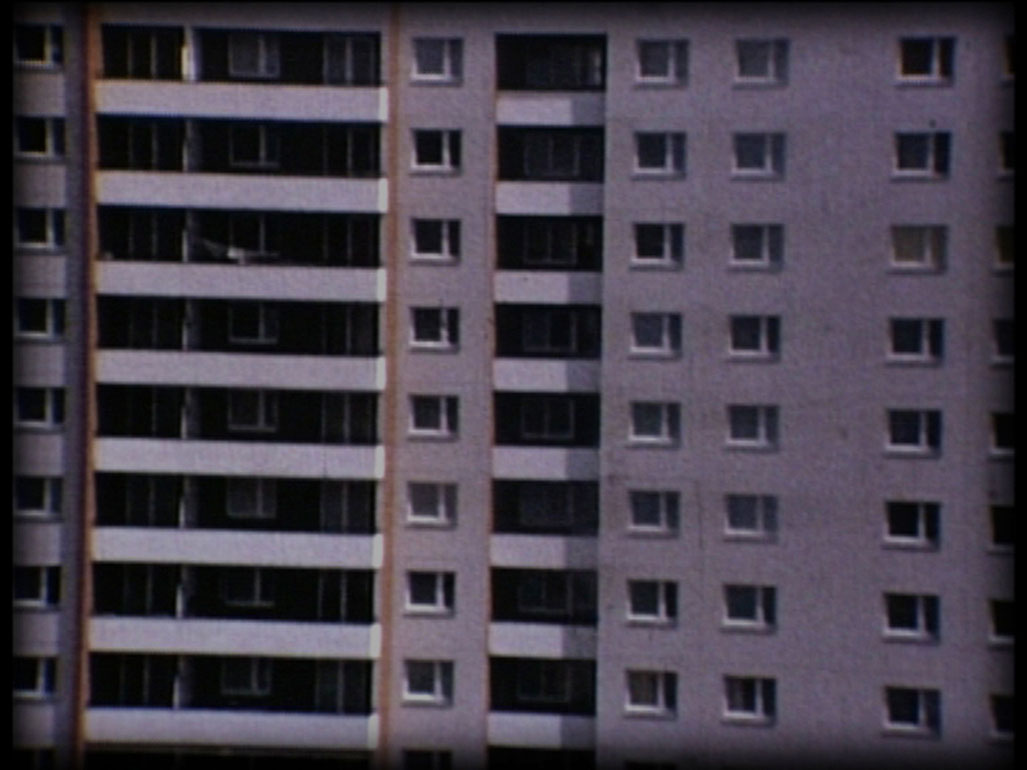Rooms
The film begins in the dark of a narrow hallway. The camera pans and George W. Johnson´s tinny laughter from the “Laughing Song,” recorded in 1898 as part of the Edison brown wax series, lies over the images like a cynical commentary. A cut leads from the corridor into the bedroom where there is a transistor radio next to a bed with a flattened bedspread. In the stairway, the light flickers, gentle droning mixes into the sinister music, fragments of a sentimental melody seep into the soundtrack. A concrete housing complex is visible through the living room curtain.
Rooms proclaims the investigative, strictly subjective gaze of the amateur film: anonymous couples appear, pose or pretend to be unobserved, they celebrate, drink, and kiss. The wallpaper, curtains, and house coats are dominated by floral patterns. Gentle waves of a golden sea roll onto the beach, like in an animated wall mural. After a surreal interlude—a group of flamingos wades through a room with ankle-deep water—the camera´s gaze, from the fire-ladder of a house, falls onto the streets of what looks like an American city. What story is being told here?
Johannes Hammel´s films are (and pose) material questions: how do pictorial surfaces refer to their times of origin, and the reasons for their production? How do backdrops differ from original sites of action? And how easy is it to falsify circumstantial evidence found in film material: in interiors, and in textile designs? Rooms is not about spatial effects, but about the aesthetic norms of old home movies, about Super-8- and identity projections—and, for example, about the double instability of interior light and film lighting. Appearances can´t be trusted: the border between authentic and faked images is wafer-thin.
(Stefan Grissemann)
Translation: Lisa Rosenblatt
Super8 film sequences lead us into the home and nostalgic rooms of the 1970s. In the film’s flicker we get a sense of a dogged struggle against one’s own impermanence – just as those filming hoped to capture an eternal memory through their recording. As if bidding farewell, they lead us ritually through the rooms of their lives and vanish in a cinematic world of their own creation.
(Diagonale 2013)
The film starts with residential areas in 1970´s Europe with "Laughing Song" recorded in 1898. Composed of found footage, it begins with a transitor radio and pans to show wallpapers and curtains dominated by floral patterns. The outside scenery, seen from inside of a house, is a contrasting combination of a quiet apartment complex from the past and the concret jungle from the present. Why does the film show these two contrasting images at the same time? This is the question we need to ask watching the film.
(Jinna Lee)
Rooms
2013
Austria
10 min



